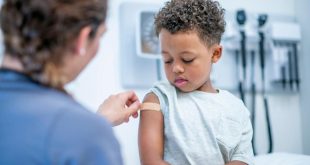
By: The American Cancer Society
A new report from the American Cancer Society says much of the suffering and death from cancer could be prevented by a more coordinated effort to change individual health behaviors. Behaviors that are known to lower cancer risk include avoiding tobacco, maintaining a healthy weight, eating a healthy diet, getting enough exercise, and getting recommended screenings and vaccinations.
Every 2 years, researchers from the American Cancer Society analyze data for cancer risk factors and screening from the Centers for Disease Control and Prevention (CDC) to strengthen cancer prevention and early detection efforts. This year the findings are published in the journal Cancer Epidemiology, Biomarkers & Prevention and in the report Cancer Prevention & Early Detection Facts & Figures 2017-2018.
The report points out that individual health behaviors are strongly influenced by social, economic, and legislative factors. Among the areas of most concern: smoking rates among certain populations, obesity, indoor tanning, and low use of vaccines against human papillomavirus (HPV), which causes cervical cancer and other cancers. Also, less than 63% of Americans are up-to-date on colon cancer screening, which can not only find cancer early, but also may prevent cancer from developing in the first place. The uninsured and under-insured are significantly less likely to be up-to-date on screening.
Some highlights from this year’s report:
Tobacco use
- Tobacco use remains the single largest preventable cause of disease and premature death in the United States. Despite substantial gains in tobacco control since the first Surgeon General’s Report in 1964, tobacco use still kills about 480,000 people each year.
- An estimated 15.3% of adults (16.8% of men; 13.8% of women) were cigarette smokers in 2015, compared to 17.0% in 2014 and 24.6% in 1997.
- People with the lowest education level smoke the most. Among those without a high school diploma, 25.6% smoke compared to only 7.3% of those with an undergraduate college degree and 3.7% of those with a graduate school degree.
- People who identified themselves as gay or lesbian (17.8%) or bisexual (23.2%) had higher smoking rates than those who identified as straight (15.1%).
- The use of other forms of combustible tobacco, including cigars and waterpipes (hookahs), has increased in recent years and they increase risk of some of the same cancers as regular cigarettes.
- The proportion of adults who have tried e-cigarettes increased dramatically between 2010 and 2015. E-cigarettes have the potential to harm health, especially the lungs and heart. No e-cigarette has yet been approved by the US Food and Drug Administration.
- Among youth, cigarette use has declined, but the use of other tobacco products, including e-cigarettes and hookahs, has increased dramatically.
Obesity, physical activity, and nutrition
- After tobacco use, the major risk factors for cancer are obesity, lack of exercise, and poor eating habits.
- The World Cancer Research Fund estimates that about 20% (1 out of 5) of all cancers in the United States are due to poor diet and not enough physical activity, as well as being overweight or obese.
- During 2013-2014, 70% of American adults were overweight or obese.
- During 2013-2014, obesity rates ranged from 9.4% in young children (2-5 years) to 17.5% in older children (6-11 years) and 20.5% in adolescents (12-19 years).
- In 2015, about half of adults reported meeting recommended activity levels (at least 150 minutes of moderate or 75 minutes of vigorous activity per week). However, just 27.1% of U.S. high school students met recommended levels of physical activity.
- In 2015, only 16% of adults said they got at least 3 servings of vegetables and 28.9% said they got at least 2 servings of fruits daily. About 14.8% of high school students said they got at least 3 servings of vegetables and about 30% said they got at least 2 servings of fruits or 100% fruit juice daily.
Ultraviolet radiation and skin cancer
- Ultraviolet (UV) rays from the sun and manmade sources such as tanning beds cause skin cancer, yet most adults and teens in the U.S. do not regularly protect themselves from UV rays.
- In 2015, 34.8% of adults reported using sunscreen when outside for an hour or more on a warm, sunny day in the past 12 months, and 39% reported seeking shade, while fewer adults used clothing protection, including wearing wide-brimmed hats (14.7%) or long-sleeved shirts (12.8%).
- In 2015, more than half (55.8%) of U.S. high school students reported having had a sunburn in the past year.
- Indoor tanning use has declined among high school girls from 25.4% in 2009 to 10.6% in 2015. The risk of melanoma is about 60% higher for people who began using indoor tanning devices before the age of 35 and increases with the more time spent using an indoor tanning device.
Screenings and vaccinations
- Getting recommended screenings and vaccinations can prevent some types of cancer. Screening can also help detect cancer at an earlier stage when it’s likely to be easier to treat. However, many Americans don’t get all the screenings they should, especially those who are uninsured or under-insured, recent immigrants, and those with low education and low socioeconomic status.
- Although use of the human papillomavirus (HPV) vaccine, which helps prevent against cervical and some other cancers, has increased, HPV vaccination remains low with only 52.2% of adolescent girls and 39% of adolescent boys receiving the recommended 2-dose vaccination series.
- Breast, cervical and colon cancer screening increased in the past several decades, contributing to falling death rates in these cancers.
- Approximately 64% of women age 40 and older have received mammograms in the past 2 years, and 81.4% of women ages 21 to 65 have received cervical cancer screening in the past 3 years.
- Colon cancer screening for recommended populations increased rapidly since the 2000’s (from 38.6% in 2000 to 62.6% in 2015), mostly through increased use of colonoscopy. People without insurance are much less likely to get recommended cancer screening tests; for example, only 25.1% of people without insurance get recommended colon cancer screening.
- Lung cancer screening is recommended for those at high risk, but in 2015 only 3.2% of current heavy smokers and 4.6% of former smokers had been screened within the past year.





